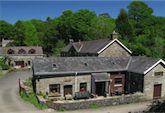Reptiles are cold-blooded creatures. In the winter they hibernate under logs or discarded building material or in burrows in soft earth, where they can keep warm and out of the sight of predators. On cold days, reptiles are very slow moving and make easy meals for foxes, badgers, buzzards and their many other predators. To warm up their bodies in the morning, reptiles bask in the open: they gain their body heat from the sun rather than from the food they eat. On very hot days most reptiles retreat to damp shady places to avoid overheating.
Wales has five native reptile species – three species of lizard and two species of snakes. Only one of the latter is venomous. In addition, a marine turtle is frequently found in our waters and can be regarded as native.
1. Sand Lizard Lacerta agilis
2. Common or Viviaprous Lizard Lacerta (Zootoca) vivipara
3. Slow Worm Anguis fragilis
4. Grass Snake Natrix natrix
5. The Adder Vipera berus
6. Marine Turtles Dermochelyidae and Cheloniidae
They are all under threat from man’s activities and although some of the species probably exist at Plas Farm, they are hardly ever seen. Since 1981, all Welsh reptiles have been protected by law. It is illegal to kill, injure or harm the adder, slow worm, common lizard or grass snake in any way.
<h2>Interesting Reptile Facts</h2>
Several species of lizard, including the slow worm, are able to grow replacement tails if their original tail gets broken off. If under attack, the lizard can release its own tail, which snaps at a special weak point and continues wriggling in front of the predator, distracting it and allowing the lizard time to escape.
Some reptiles lay eggs, while others – in Britain just the adder and the common lizard – are viviparous, which means they give birth to live offspring.
By temporarily dislocating its jaw, a snake can swallow its food – small mammals, amphibians or birds’ eggs, for example – whole, without chewing it.
At least once per year, generally in the summer months, reptiles shed their scaly skins, a process known as sloughing (pronounced ‘sluffing’); this means they are able to grow bigger and it also helps to get rid of skin parasites. Reptiles also grow new teeth continuously.
The Herpetological Conservation Trust is a UK based charity established to further the conservation of amphibians and reptiles (collectively known as herpetofauna).
